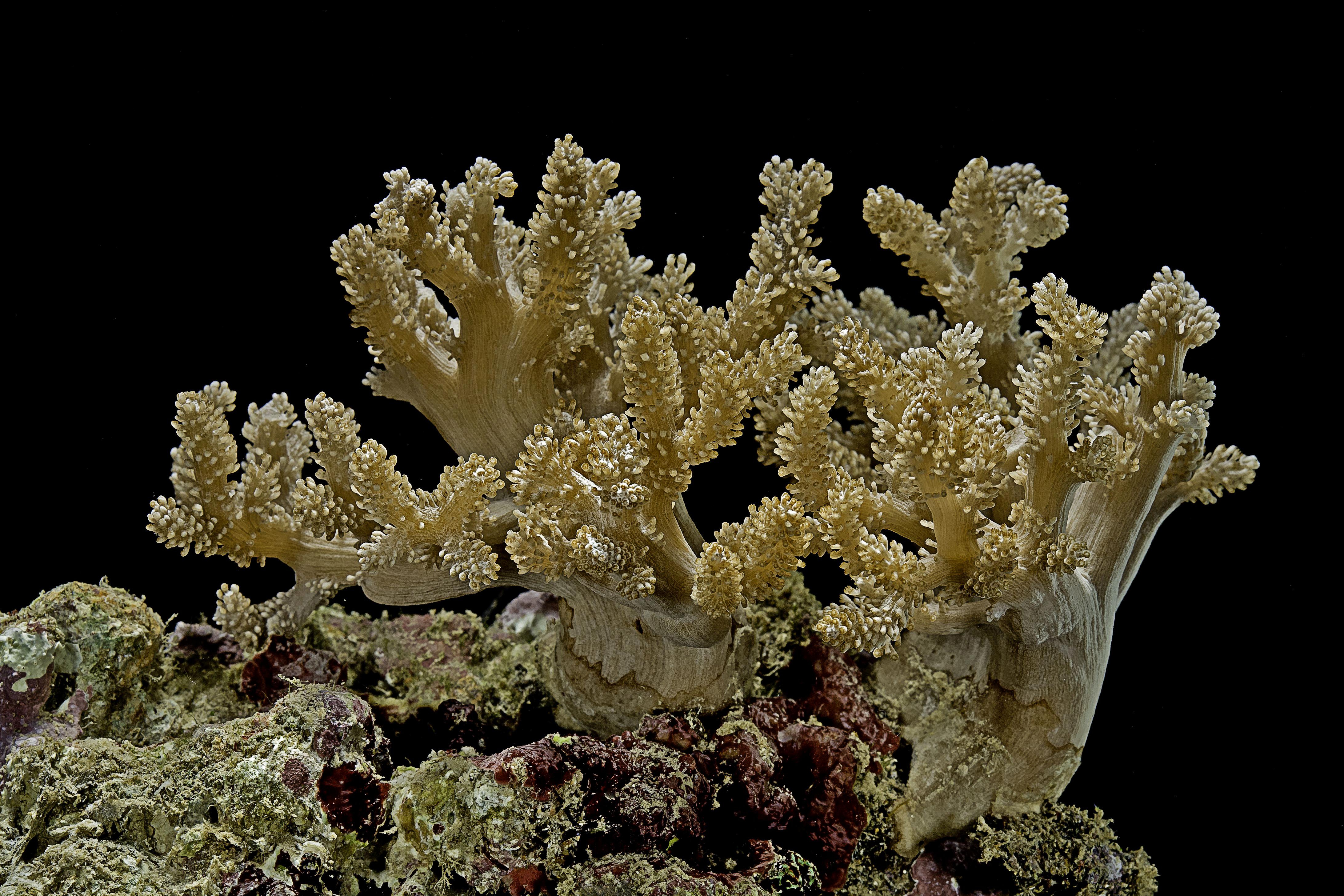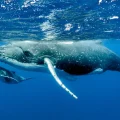Soft corals, also known as octocorals, are a fascinating group of marine organisms that play a vital role in our ocean ecosystems. Unlike their stony coral counterparts, soft corals do not have hard skeletons and are therefore unable to build reefs. Instead, they have a flexible, fleshy structure that allows them to sway with the currents, resembling plants or trees in appearance.
One of the most popular types of soft corals is the Zoanthid. These corals come in a wide array of colors and patterns, making them a favorite among aquarium enthusiasts. They are relatively easy to care for and can thrive in a variety of water conditions. Additionally, Zoanthids can reproduce rapidly, forming beautiful colonies that add vibrancy to any reef tank.
Another type of soft coral that is commonly seen in both aquariums and the wild is the Mushroom Coral. As the name suggests, these corals have a mushroom-like shape and come in a range of colors. They are known for their ability to quickly spread across rocks and other surfaces, adding a unique texture to the reef. Mushroom corals are generally hardy and can tolerate a wide range of lighting and water conditions, making them suitable for beginner reef keepers.
The Toadstool Leather Coral is another popular choice among soft coral enthusiasts. These corals have a distinctive toadstool-like appearance, with a large, fleshy cap and a stalk. They are known for their hardiness and adaptability, making them an excellent choice for beginners. Toadstool Leather Corals can grow quite large, so it’s important to provide them with enough space in the aquarium.
Green Star Polyps, also known as GSP, are a fast-growing soft coral species that can quickly cover rocks and other surfaces. They have a vibrant green color and tiny polyps that extend during the day, creating a beautiful and dynamic display. Green Star Polyps are relatively hardy and can tolerate a wide range of water conditions, making them a great addition to any reef tank.
Pulsing Xenia is another soft coral that is highly sought after by reef keepers. These corals have pulsating polyps that create a mesmerizing motion in the aquarium. Pulsing Xenia corals require moderate lighting and water flow, and they can quickly spread across rocks and other surfaces. They are known for their delicate nature, so it’s important to handle them with care.
Kenya Tree Coral, also known as Capnella sp., is a soft coral that is known for its tree-like appearance. These corals have long, slender branches with polyps covering them. Kenya Tree Corals are relatively hardy and can tolerate a wide range of water conditions. They are fast-growing and can quickly fill up space in the aquarium.
Colt Corals, also known as Cladiella sp., are another popular choice among soft coral enthusiasts. These corals have long, finger-like branches with polyps covering them. Colt Corals are known for their hardiness and adaptability, making them suitable for beginner reef keepers. They can tolerate a wide range of lighting and water conditions.
In addition to their aesthetic appeal, soft corals also play a crucial role in our marine ecosystems. They provide shelter and protection for a wide variety of marine life, including small fish and invertebrates. Soft corals also contribute to the overall health of the ecosystem by filtering and purifying the water. They absorb nutrients and remove harmful substances, helping to maintain water quality.
Soft corals also have ecological benefits outside of the marine environment. Boulders and reef structures made of cemented soft coral sclerites that form near shores act as natural wave breakers, protecting land against erosion by the sea or ocean during typhoons or cyclones. This natural protection helps to safeguard coastal communities and infrastructure.
Soft corals are a diverse and fascinating group of marine organisms. They come in a variety of shapes, sizes, and colors, adding beauty and vibrancy to reef tanks. Soft corals are relatively easy to care for and can thrive in a range of water conditions. Additionally, they provide important ecological benefits, both in the marine environment and for coastal protection. Whether you are a beginner reef aquarist or an experienced enthusiast, soft corals are a fantastic addition to any aquarium.
What Is Considered A Soft Coral?
Soft corals are a type of coral that are characterized by their soft and flexible nature. Unlike hard corals, which have stony skeletons and contribute to reef formation, soft corals do not build reefs. Instead, they have a more plant-like appearance, often resembling trees or shrubs in underwater ecosystems.
Here are some key characteristics of soft corals:
1. Soft and bendable: As the name suggests, soft corals lack the rigid structure of hard corals. They are flexible and can sway with the water currents.
2. Non-reef-building: Unlike hard corals, soft corals do not create the stony structures that form coral reefs. Instead, they grow wood-like cores, known as gorgonin, which provide support.
3. Fleshy rinds: Soft corals have a fleshy outer layer or rind that covers their wood-like cores. This layer helps protect the coral and provides a surface for the coral’s polyps to attach to.
4. Polyps: Soft corals have tiny, tentacle-like structures called polyps that extend from their fleshy rinds. These polyps capture food particles from the water and play a crucial role in the coral’s nutrition.
5. Variety of shapes and colors: Soft corals come in a wide range of shapes, sizes, and colors. Some common soft coral types include sea fingers, sea whips, sea fans, and sea pens.
6. Adaptability: Soft corals are known for their ability to adapt to different environmental conditions. They can thrive in both shallow and deep waters and can tolerate a wider range of temperatures compared to hard corals.
Soft corals are an important part of marine ecosystems, providing habitat and food sources for a variety of marine organisms. While they may not contribute to reef formation like hard corals, soft corals play a vital role in maintaining biodiversity and supporting the overall health of coral reef ecosystems.

What Is The Softest Coral?
The softest coral is commonly referred to as “soft corals” in the aquarium trade. Soft corals belong to the class Anthozoa and have a soft, flexible body structure unlike hard corals, which have a hard, stony skeleton. While all soft corals have a soft texture, there is no specific type that can be considered the absolute softest. However, there are several popular species of soft corals known for their soft and pliable nature.
1. Zoanthids: Zoanthids are a diverse group of soft corals known for their vibrant colors and unique patterns. They have a soft and fleshy body, making them one of the softest types of corals.
2. Mushroom Corals: Mushroom corals, also known as disc corals or ricordea, have a soft and leathery texture. They come in various shapes, sizes, and colors, resembling mushrooms or discs.
3. Toadstool Leather Coral: Toadstool leather corals are soft and pliable, with a distinct toadstool-like shape. They have a leathery texture and can be found in different colors, adding a beautiful touch to aquariums.
4. Green Star Polyps: Green star polyps, also known as GSP, are soft corals with a velvety texture. They form a mat-like structure and have bright green polyps, making them a popular choice for beginner reef keepers.
5. Pulsing Xenia: Pulsing xenia is a soft coral that exhibits a rhythmic pulsing motion, giving it its name. It has a delicate and soft appearance, with individual polyps covering its branches.
6. Kenya Tree Coral: Kenya tree corals have a soft and flexible body, with branches that resemble a tree. They are easy to care for and can add movement and color to an aquarium.
7. Colt Coral: Colt corals, also known as finger corals, have a soft and pliable texture. They have long, finger-like polyps that sway with water movement, creating a mesmerizing display.
These are just a few examples of soft corals known for their soft texture. Each soft coral species has its own unique characteristics and care requirements, so it’s important to research and provide the appropriate conditions for their growth and well-being in an aquarium.
What Is Soft Coral Used For?
Soft coral serves various purposes and has numerous uses in different contexts. Here are some of the key applications of soft coral:
1. Marine ecosystem: Soft corals play a vital role in marine ecosystems by providing habitat and shelter for a diverse range of marine organisms. They create complex three-dimensional structures that offer protection and breeding grounds for fish, invertebrates, and other marine species.
2. Aquarium trade: Soft corals are popular in the aquarium trade due to their vibrant colors and unique shapes. Many hobbyists and enthusiasts keep soft corals in their aquariums to create visually appealing and dynamic underwater landscapes.
3. Pharmaceutical research: Soft corals possess bioactive compounds that have potential medicinal properties. These compounds are being studied for their ability to treat various diseases, including cancer, inflammation, and bacterial infections. Soft corals hold promise as a source of novel pharmaceuticals and natural products.
4. Environmental indicators: The health and abundance of soft corals can serve as indicators of the overall health of coral reef ecosystems. Monitoring soft coral populations helps scientists assess the impact of environmental factors such as pollution, climate change, and overfishing on coral reef ecosystems.
5. Coastal protection: Soft corals can also contribute to protecting coastal areas from erosion. When soft coral sclerites (calcium carbonate structures) cement together, they form boulders and reef structures near shores. These structures act as natural wave breakers, reducing the force of waves and protecting the land against erosion during storms and extreme weather events.
6. Research and education: Soft corals are frequently studied by scientists and researchers to better understand their biology, ecology, and evolutionary history. They are used in educational settings to teach students about marine ecosystems, coral reef conservation, and the interconnections between different organisms.
Soft corals have ecological significance in marine ecosystems, provide visual appeal in aquariums, offer potential medicinal benefits, serve as environmental indicators, contribute to coastal protection, and are valuable for research and educational purposes.
Are Soft Corals Easy To Keep?
Soft corals are indeed easy to keep, especially for beginner reef aquarists. They are known for their hardiness and adaptability, making them a great choice for those who are new to the hobby. Here are some reasons why soft corals are easy to keep:
1. Hardy Nature: Soft corals have a reputation for being resilient and tolerant of less-than-ideal water conditions. They can withstand fluctuations in temperature, salinity, and water quality, which makes them forgiving for beginners who may still be learning the ropes of aquarium maintenance.
2. Low Light Requirements: Unlike some other corals that require intense lighting, soft corals can thrive in lower light conditions. This means you don’t need to invest in expensive lighting equipment right from the start, making it more cost-effective for beginners.
3. Fragility and Ease of Propagation: Soft corals do not have a hard calcium carbonate skeleton like their stony coral counterparts. This makes them less prone to damage and easier to frag. Fragging refers to the process of cutting a small piece of coral and allowing it to grow into a new colony. Soft corals are typically more forgiving during the fragging process, making it easier for beginners to propagate and expand their coral collection.
4. Minimal Maintenance: Soft corals generally require less maintenance compared to stony corals. They do not require as much feeding or specialized care. Regular water changes and maintaining stable water parameters are usually sufficient to keep them healthy and thriving.
5. Wide Variety of Options: Soft corals come in a wide range of colors, shapes, and sizes, offering beginners a variety of choices to create a visually appealing and diverse reef tank. Some popular soft coral species include mushrooms, zoanthids, leathers, and polyps.
To summarize, soft corals are easy to keep for beginners due to their hardiness, low light requirements, fragility, minimal maintenance needs, and the wide variety of options available. They are a great way to start your journey into the fascinating world of reef aquariums.
Conclusion
Soft corals are fascinating and valuable organisms in the marine ecosystem. They are non-reef-building corals that possess unique characteristics, such as their soft and bendable nature, which often resembles plants or trees. Unlike their stony coral counterparts, soft corals do not have a hard calcium carbonate skeleton but instead develop wood-like cores and fleshy rinds for protection.
Soft corals come in various types, including zoanthids, mushroom corals, toadstool leather corals, green star polyps, pulsing xenia, Kenya tree corals, and colt corals. Each type offers its own distinctive beauty and growth patterns, making them a popular choice among reef aquarists.
One of the advantages of keeping soft corals in an aquarium is their hardiness and ease of care, especially for beginners. These corals do not require a rigorous maintenance routine and can be easily fragged due to their absence of a stony skeleton. This makes them a great option for those starting out in the world of reef keeping.
Soft corals also serve a vital purpose outside of the marine environment. The boulders and reef structures they create near shores act as natural wave breakers, protecting land against erosion caused by the sea during severe weather events like typhoons or cyclones. Their presence helps to safeguard our human habitat and maintain the balance of our coastal ecosystems.
Soft corals are not only visually stunning additions to aquariums but also play a significant role in the health and resilience of our marine environments. Their unique characteristics, ease of care, and ecological benefits make them a valuable component of our underwater world.












